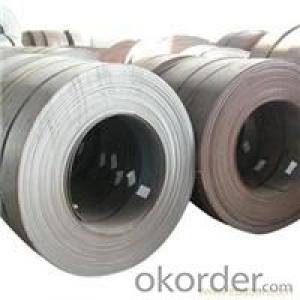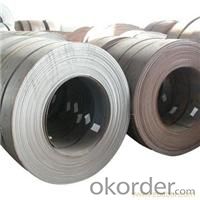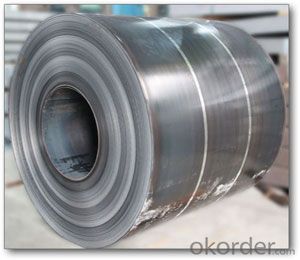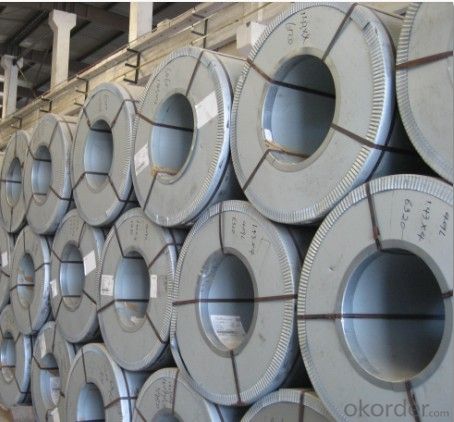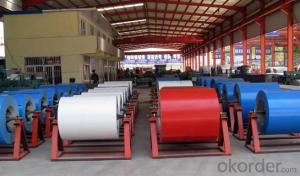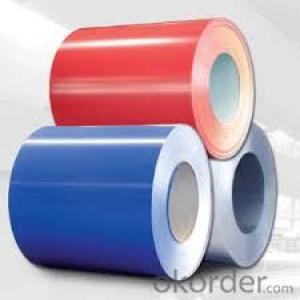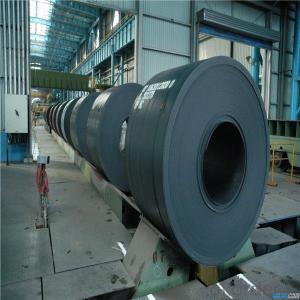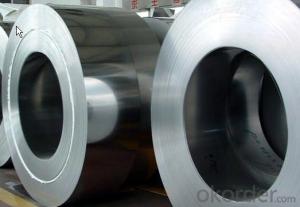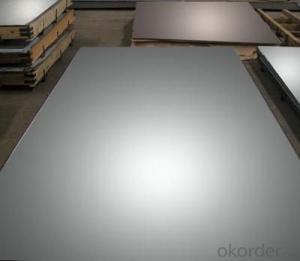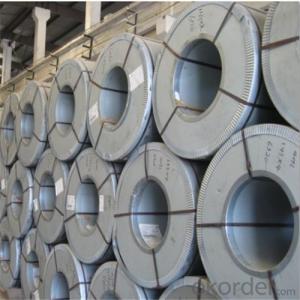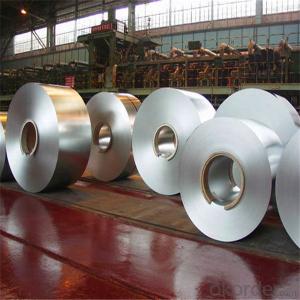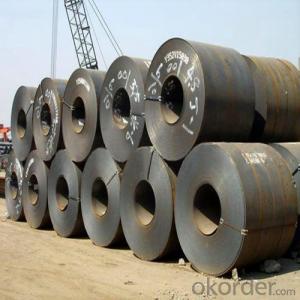HOT ROLLED STEEL COIL HIGH QUALITY AND COMPETITVE PRICE
- Loading Port:
- Shanghai
- Payment Terms:
- TT OR LC
- Min Order Qty:
- 50 m.t.
- Supply Capability:
- 50000 m.t./month
OKorder Service Pledge
OKorder Financial Service
You Might Also Like
HOT-ROLLED STEEL COIL
Hot rolled low hardness, easy processing, good ductility.
Available specification:
thickness | width(mm) | length(mm) | coil inside diameter(mm) | |
HOT ROLLED STEEL COIL | 1.5-25 | 600-2000 | 762 | |
HOT ROLLED STEEL STRIP | 1.5-20 | 30-720 | 762 | |
HOT ROLLED STEEL PLATE | 6-700 | 500-4500 | 4000-18000 | |
HOT ROLLED STEELSHEET | 1.2-25 | 50-2000 | 0-18000 |
We can supply customers' with different specifications of the highest quality and lowest price.
With excellent cold bending molded manufacturablity, good decoration effect, strong anti-corrosion ability, galvanized steel coils and sheets are also pollution-free and easily recycled. Accordingly, they can be used as final products and basic plates of color coated steel coils.
Sincerely welcome to contact us for the future details if any item interest you ,and we will make every effort to assure that your requirements will be satisfied ,and we hope to establish long-term business relations with you on the basis of the equality and mutual benefit.
We are waiting for your email.
- Q: What are the different methods of transporting steel coils?
- Depending on factors such as weight, size, and distance, there are various methods available for transporting steel coils. These include: 1. Flatbed trucks: Steel coils can be transported on flatbed trucks, which have a spacious open platform for easy loading and unloading. This option is commonly used for shipments of short to medium distances and provides convenient access to the coils. 2. Rail transport: Steel coils can also be transported by rail using specialized coil cars with curved interiors to securely hold the coils. Rail transport is often preferred for long-distance shipments due to its cost-effectiveness and capacity to handle large quantities. 3. Shipping containers: Steel coils can be loaded into shipping containers for transportation via sea or inland waterways. To prevent movement during transit, the coils are usually secured inside the container using bracing or blocking materials. This method is commonly employed for international shipments and facilitates easy handling and transfer between different modes of transportation. 4. Barges: In some cases, steel coils can be transported on barges along rivers, canals, or other inland waterways. Barges are particularly suitable for large and heavy shipments, offering a cost-effective and efficient means of transportation. 5. Roll-on/roll-off (RoRo) vessels: RoRo vessels are specialized ships designed to transport vehicles and large cargo that can be rolled on and off the ship. Steel coils can be loaded onto trailers or flatbeds and driven onto the vessel, providing a convenient transportation option. 6. Air freight: Although less common due to higher costs, steel coils can also be transported by air. This method is typically used for urgent and time-sensitive shipments or when the distance is too great for other modes of transportation. Air freight offers the advantage of speed and can be a viable option in certain situations. In conclusion, the choice of transportation method for steel coils depends on factors such as cost, distance, time frame, and logistical requirements. Freight forwarders and logistics providers can assist in determining the most suitable method for a specific shipment.
- Q: How are steel coils used in the production of oil and gas pipelines?
- Steel coils are used in the production of oil and gas pipelines as they serve as the primary material for constructing the pipes. These coils are formed into tubes and welded together to create a continuous pipeline that can transport oil and gas over long distances. The steel coils provide strength, durability, and corrosion resistance to withstand the harsh conditions of oil and gas transportation, ensuring the safe and efficient delivery of these resources.
- Q: How are steel coils used in the production of steel springs?
- Steel coils are used in the production of steel springs as they are rolled into a specific shape and size, providing the necessary strength and flexibility required for springs. These coils are then cut and formed into the desired spring shape, allowing them to store and release energy efficiently.
- Q: how many persent of manganese in all types of carbon steel
- Not more than 1.65 % of manganese in carbon steel. *Carbon steel, also called plain carbon steel, is steel where the main alloying constituent is carbon. The American Iron and Steel Institute (AISI) defines carbon steel as: Steel is considered to be carbon steel when no minimum content is specified or required for chromium, cobalt, columbium, molybdenum, nickel, titanium, tungsten, vanadium or zirconium, or any other element to be added to obtain a desired alloying effect; when the specified minimum for copper does not exceed 0.40 percent; or when the maximum content specified for any of the following elements does not exceed the percentages noted: manganese 1.65, silicon 0.60, copper 0.60 *AISI 1040 is a carbon steel which is having a 0.60-0.90 % of manganese.
- Q: What are the different types of steel coil recoiling methods?
- There are several different types of steel coil recoiling methods, including slitting, cut-to-length, and multi-blanking.
- Q: Can you weld copper or brass to steel?
- How To Weld Copper
- Q: Two different shaving razors I'm looking to buy have different specs. in terms of the metals used for the blade; one being 1045 surgical stainless steel, the other 440 stainless (not sure if its A B or C, but probably 440A or 440B because it's not specified). So which one is better for the intended use as a shaving razor?
- 1045 stainless is better
- Q: What are the different methods of edge wave correction for steel coils?
- Steel coils often experience edge waves, which are deformations along the edges. To address this issue, various methods are commonly employed. One frequently used technique is edge wave flattening. This involves applying pressure to the coil's edges using hydraulic or mechanical devices. By doing so, any waves or deformations are effectively flattened out. Edge wave flattening can be performed during the coil processing stage or as a separate step after production. Another approach is edge trimming, where the coil's edges are trimmed or cut to remove waves or deformations. Mechanical shearing or laser cutting technology can be utilized for this purpose. Edge trimming not only corrects edge waves but also ensures straight and smooth edges. Tension leveling is another popular method. It involves subjecting the coil to tension forces, which stretch and flatten any waves or deformations. Tension leveling is typically performed during the processing stage and is effective in correcting both edge waves and other surface defects. Roll leveling is also effective for correcting edge waves. This method utilizes a set of rolls to gradually apply pressure to the coil, resulting in the flattening of waves or deformations. Roll leveling is a versatile technique that can address various types of coil defects, including edge waves. Furthermore, advancements in technology have led to the development of automated edge wave correction systems. These systems employ sensors and computer algorithms to detect and correct edge waves in real-time during the coil processing stage. This method ensures precise and consistent correction, reducing the need for manual intervention and improving overall efficiency. In summary, the methods for correcting edge waves in steel coils include edge wave flattening, edge trimming, tension leveling, roll leveling, and automated correction systems. Each method offers unique advantages and can be chosen based on the specific requirements and constraints of the coil processing operation.
- Q: What are the weight ranges for steel coils?
- The weight ranges for steel coils can vary depending on the specific type and thickness of the steel. However, common weight ranges for steel coils typically range from a few hundred pounds to several thousand pounds.
- Q: How are steel coils used in the manufacturing of construction bulldozers?
- Steel coils are used in the manufacturing of construction bulldozers to create the main structural components, such as the chassis and the blade, which require the strength and durability that steel provides. The coils are processed and shaped into the desired parts through cutting, bending, and welding techniques, ensuring the bulldozers can withstand heavy loads and harsh working conditions on construction sites.
Send your message to us
HOT ROLLED STEEL COIL HIGH QUALITY AND COMPETITVE PRICE
- Loading Port:
- Shanghai
- Payment Terms:
- TT OR LC
- Min Order Qty:
- 50 m.t.
- Supply Capability:
- 50000 m.t./month
OKorder Service Pledge
OKorder Financial Service
Similar products
Hot products
Hot Searches
Related keywords
